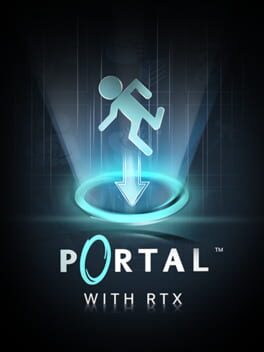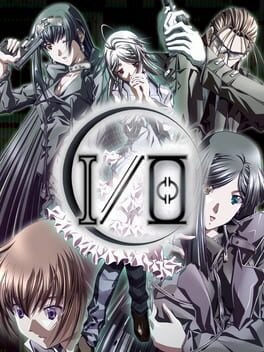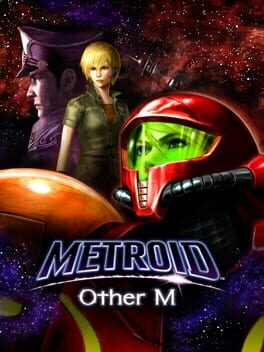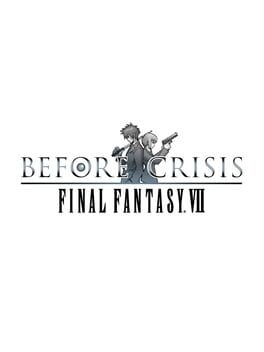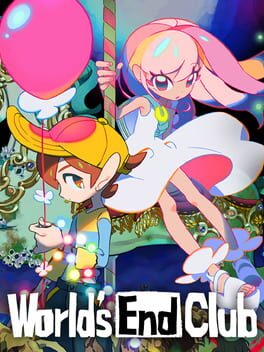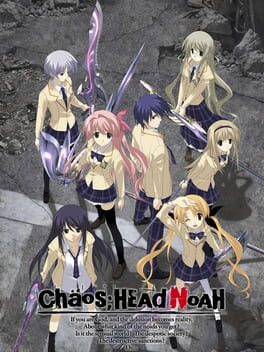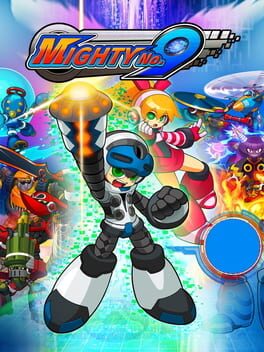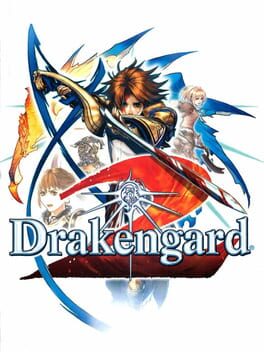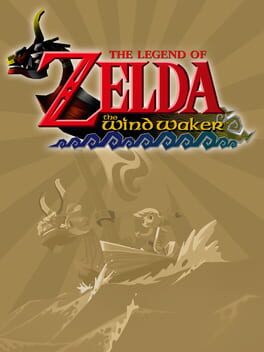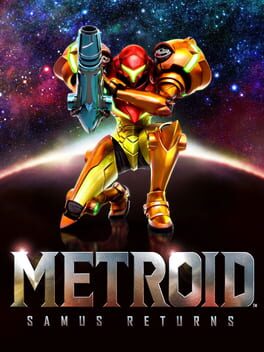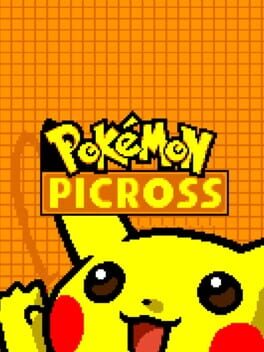RetroChocolate
2022
A while back, NVIDIA did a version of Quake 2 with ray tracing. This was, by all accounts, fucking stupid, and frankly, a little insulting when the version of Quake 2 on steam was (and still is) a 20 year old Windows port that barely functions, and doesn't even contain the OST because it reads the OST off the CD it was originally released on.
But if there's something positive I can say about Quake 2 RTX that I can't say about this, it's that it's fucking hilarious. Quake 2 isn't exactly a great looking game (aside from it's age, it's general art direction just isn't even close to as good as Quake 1), and juxtaposing hyper realistic lighting onto a game where a singular level probably has less polygons than the Yandere Simulator toothbrush just looks extremely funny to me. Not good mind, you but it's at least a cool little novelty that you can laugh at for a level or two before switching back to the better looking version.
Unfortunately, NVIDIA's next game to add ray tracing to for absolutely no reason, Portal, is a bit to modern of a game to really have the anachronistic novelty that Quake 2 has. The ray tracing doesn't look bad like it did in Quake 2, but it doesn't really add anything to the game visually either. The only times I ever really even noticed it, it felt more distracting than cool looking.
But Portal with RTX takes things a step further: rather than just being the same game with new lighting, Portal with RTX is more or less a full remaster, replacing not only the lighting engine, but the textures as well. And this is where Portal with RTX falls from "Portal but it runs like shit" to "Portal but it looks like shit."
The new textures are ass. Portal's original textures aren't perfectly high res to where you wouldn't be able to see the pixels if you looked, but they were certainly not low res enough to make you go "Damn, that's a crunchy texture." As a result, the new textures, rather than trying to be higher res versions of the old textures, try to make the game look "better" by simply looking more complex and different.
Where these new textures fall flat is in that they simply don't have any of the actually important details of the original textures. The original textures looked dirty and worn, they really give the impression of a facility that maybe isn't falling apart yet, but certainly hasn't been cleaned in quite a while and is definitely abandoned. The new textures, on the other hand, look sleek and clean. There's still some grit there if you look really close, but it gives no where near the impression of an abandoned facility that the original textures do.
There's some other weird choices too. The portals themselves are redone and just look significantly more bland than the original portals. The intent seems to have been to make them show off the lighting better, but the lighting effect of the original actually looks cooler. The buttons are made transparent, and the cubes are redesigned to glow pretty colors, for no particular reason. Yet elements that don't show up until later have less effort put in, or aren't even redone at all. The companion cube, for example, is jarringly still using the EXACT SAME TEXTURE as the original game, meaning it doesn't look anything like any of the other cubes in the game.
It's as if the developers themselves didn't see this as anymore of a cool novelty that wears off in 20 seconds. The game only took me 90 minutes for christ's sake, you can't actually expect that people WONT see the end or something.
The game DOES feature the ability to switch back to the original textures, but the new lighting engine doesn't play well with the original texture's transparency, which all makes you ask why you aren't just playing the version that's a third of the size and DOESNT require a 3080 to run.
But if there's something positive I can say about Quake 2 RTX that I can't say about this, it's that it's fucking hilarious. Quake 2 isn't exactly a great looking game (aside from it's age, it's general art direction just isn't even close to as good as Quake 1), and juxtaposing hyper realistic lighting onto a game where a singular level probably has less polygons than the Yandere Simulator toothbrush just looks extremely funny to me. Not good mind, you but it's at least a cool little novelty that you can laugh at for a level or two before switching back to the better looking version.
Unfortunately, NVIDIA's next game to add ray tracing to for absolutely no reason, Portal, is a bit to modern of a game to really have the anachronistic novelty that Quake 2 has. The ray tracing doesn't look bad like it did in Quake 2, but it doesn't really add anything to the game visually either. The only times I ever really even noticed it, it felt more distracting than cool looking.
But Portal with RTX takes things a step further: rather than just being the same game with new lighting, Portal with RTX is more or less a full remaster, replacing not only the lighting engine, but the textures as well. And this is where Portal with RTX falls from "Portal but it runs like shit" to "Portal but it looks like shit."
The new textures are ass. Portal's original textures aren't perfectly high res to where you wouldn't be able to see the pixels if you looked, but they were certainly not low res enough to make you go "Damn, that's a crunchy texture." As a result, the new textures, rather than trying to be higher res versions of the old textures, try to make the game look "better" by simply looking more complex and different.
Where these new textures fall flat is in that they simply don't have any of the actually important details of the original textures. The original textures looked dirty and worn, they really give the impression of a facility that maybe isn't falling apart yet, but certainly hasn't been cleaned in quite a while and is definitely abandoned. The new textures, on the other hand, look sleek and clean. There's still some grit there if you look really close, but it gives no where near the impression of an abandoned facility that the original textures do.
There's some other weird choices too. The portals themselves are redone and just look significantly more bland than the original portals. The intent seems to have been to make them show off the lighting better, but the lighting effect of the original actually looks cooler. The buttons are made transparent, and the cubes are redesigned to glow pretty colors, for no particular reason. Yet elements that don't show up until later have less effort put in, or aren't even redone at all. The companion cube, for example, is jarringly still using the EXACT SAME TEXTURE as the original game, meaning it doesn't look anything like any of the other cubes in the game.
It's as if the developers themselves didn't see this as anymore of a cool novelty that wears off in 20 seconds. The game only took me 90 minutes for christ's sake, you can't actually expect that people WONT see the end or something.
The game DOES feature the ability to switch back to the original textures, but the new lighting engine doesn't play well with the original texture's transparency, which all makes you ask why you aren't just playing the version that's a third of the size and DOESNT require a 3080 to run.
2006
There's a scene where, after undergoing an important character transformation, a character spontaneously takes a pair of sunglasses out of his pocket and dons them, declaring "The world is too bright for me."
Every story should be strive to be a fraction of as cool as this moment, because this is exactly how all fiction should be written.
Every story should be strive to be a fraction of as cool as this moment, because this is exactly how all fiction should be written.
2010
2023
The mood set and the visuals are nice, and there's some cool technical stuff, but god, the mythos set up by this is just so silly that when the vibes aren't unsettling you, it just kinda feels corny.
As a map on it's own, it also makes some questionable design choices. The choice to be cryptic is fine and obviously a part of the vibe it's going for, but a lot of it feels too cryptic to solve the good ending on it's own, while simultaneously losing a lot of the appeal with a guide.
The enemy spam also gets really bad near the end of the map. Like, the gas station sequence is fucking atrocious. Who the hell looked at nuts.wad and said "But what if it was dark and you couldn't see?"
As a map on it's own, it also makes some questionable design choices. The choice to be cryptic is fine and obviously a part of the vibe it's going for, but a lot of it feels too cryptic to solve the good ending on it's own, while simultaneously losing a lot of the appeal with a guide.
The enemy spam also gets really bad near the end of the map. Like, the gas station sequence is fucking atrocious. Who the hell looked at nuts.wad and said "But what if it was dark and you couldn't see?"
2020
Kodaka, Uchikoshi, and Nakazawa, coming together to make a game marketed on "DANGAN RONPA MEETS ZERO ESCAPE" and then making a game that is less derivative of their previous works than anything they'd made in the past decade is honestly kind of incredible.
The games characters and tone give it a really unique and fun feel from the other games by these authors. This often gets labelled as being "Danganronpa/Zero Escape but toned down for kids" but I think people are really mistaking the tone of the game for it's target audience. The game might lack the violence of Danganronpa and Zero Escape, but it certainly never feels like the games story has been "dumbed down" for a younger audience.
The whole "Oh no, we're stuck in an underwater amusement park and being forced to play a death game" premise sounds like such a parody version of Uchikoshi's works that it's no surprise that the game isn't really about that at all. The game quickly ditches the "trapped in a place" and "forced to play a death game" premise the three creators are known for to do practically the opposite: a group of characters working together to journey across Japan.
That's not to say it's not COMPLETELY free from Nakazawa and Uchikoshi's reuse of ideas. Aside from the obvious thing near the end that Nakazawa does literally every game (and Uchikoshi uses a toned-down version of in all of the Zero Escape games), there's still a few moments here and there (particularly a major plot twist that is reused from, weirdly enough, Root Double of all things), but it never feels nearly as detrimental to the story as it is in something like Virtue's Last Reward.
The major issue with the game is, of course, the gameplay. As you would expect from Uchikoshi and Nakazawa, the way the player interacts with the gameplay plays directly into the games story elements, so I certainly wouldn't say something as silly as "they should've just made it a straight visual novel", but the problem is that the gameplay is ONLY interesting in how it relates to the story. The actual gameplay itself rarely has anything interesting going on. It all just feels so simple and afraid to do anything mechanically intensive.
The reason the game is this way all clicked for me as soon as I found out this game was originally released for iOS. Trying to play a mechanically intensive platforming game with shitty smartphone touchscreen controls might be one of the most terrible ideas ever. It's just incredibly unfortunate that the entire game is brought down by the fact that it was developed for a shitty platform that barely anyone actually played the game on anyways. Overall, the gameplay certainly isn't unbearable though, and the primary focus is still on the visual novel segments.
The games characters and tone give it a really unique and fun feel from the other games by these authors. This often gets labelled as being "Danganronpa/Zero Escape but toned down for kids" but I think people are really mistaking the tone of the game for it's target audience. The game might lack the violence of Danganronpa and Zero Escape, but it certainly never feels like the games story has been "dumbed down" for a younger audience.
The whole "Oh no, we're stuck in an underwater amusement park and being forced to play a death game" premise sounds like such a parody version of Uchikoshi's works that it's no surprise that the game isn't really about that at all. The game quickly ditches the "trapped in a place" and "forced to play a death game" premise the three creators are known for to do practically the opposite: a group of characters working together to journey across Japan.
That's not to say it's not COMPLETELY free from Nakazawa and Uchikoshi's reuse of ideas. Aside from the obvious thing near the end that Nakazawa does literally every game (and Uchikoshi uses a toned-down version of in all of the Zero Escape games), there's still a few moments here and there (particularly a major plot twist that is reused from, weirdly enough, Root Double of all things), but it never feels nearly as detrimental to the story as it is in something like Virtue's Last Reward.
The major issue with the game is, of course, the gameplay. As you would expect from Uchikoshi and Nakazawa, the way the player interacts with the gameplay plays directly into the games story elements, so I certainly wouldn't say something as silly as "they should've just made it a straight visual novel", but the problem is that the gameplay is ONLY interesting in how it relates to the story. The actual gameplay itself rarely has anything interesting going on. It all just feels so simple and afraid to do anything mechanically intensive.
The reason the game is this way all clicked for me as soon as I found out this game was originally released for iOS. Trying to play a mechanically intensive platforming game with shitty smartphone touchscreen controls might be one of the most terrible ideas ever. It's just incredibly unfortunate that the entire game is brought down by the fact that it was developed for a shitty platform that barely anyone actually played the game on anyways. Overall, the gameplay certainly isn't unbearable though, and the primary focus is still on the visual novel segments.
2009
The new routes are all at least decent, with a few routes being standouts compared to the others, though I do think their importance has been a bit overblown (I imagine mainly because they simply weren't available in English up until recently).
It's certainly nice to see the heroines get more time focused on them, but Chaos;Head itself is a complete story, and while the new content reveals a few more things not in the original game, they still feel largely supplemental. If you didn't like Chaos;Head to begin with, these probably aren't going to change your opinion.
I'm also not a fan of the choice to make these romantic routes. Giving Takumi romantic routes with all of the heroines feels so tone-deaf to his character arc in the game. It feels as though the writers might have realized this too, as the romance elements are definitely downplayed, but it still feels out of place, and I think most of the routes would have been better without it.
Where this release fails, unfortunately, is its presentation compared to the original PC release. Noah is often touted as the "Definitive edition" of Chaos;Head, but this is really in terms of it having additional content only.
For starters. I'm not a fan of the choice to change the letterboxed image with the text box below it to an inset text box. There is of course, no way in hell a publisher is going to retain a 4:3 aspect ratio when the visual part of the game is practically widescreen to begin with, but it doesn't change the fact that the game looks worse for it. Aside from my preference of the text below the image just looking nice, the textbox often clutters up the screen, especially since Chaos;Head makes use of a lot of diegetic text, which can sometimes appear behind the actual textbox.
The real travesty here though is what they did to the delusion trigger system. In the original release, the delusion triggers appeared in the space above the image. This of course, needed to be reworked, given that the space no longer even exists in Noah, and the new UI for it just looks terrible.
In the original, the delusion triggers would, visually speaking, appear subtly during a scene. The main indicator was not visuals, but the loud pulsating sound effect that accompanied it. The sound is somewhat annoying, but it all plays into the mechanic. Once you click one of the delusions, the sound goes away, and it really makes you WANT to give into Takumi's delusions, especially in some of the scenes where the delusion trigger is visible for a longer time.
The new system on the other hand, announces its presence by bulldozing into the scene with a screen-covering effect, with a transitional effect you're forced to watch, even when fast-forwarding. Furthermore, actually clicking either of the triggers covers the remaining portion of the screen in a green or red swirl, and starts a loud heartbeat sound effect that doesn't leave until the end of the trigger period. It's almost the exact opposite of how it was executed originally.
There's also the structural changes, which I'm not too huge on either. In the original Chaos;Head, there was practically no reason to get the normal ending at all. After all, it's literally just the true ending, but it's missing the final scene. Not only that, but the ending feels incomplete without the true ending scene, and the alternate Ending B isn't unlocked until you beat the true ending anyways. The choice to end the game on Ending B (an overt bad end at that) AFTER the player has already seen the true ending is certainly an odd one, but Noah only exacerbates this problem further. With 1 ending now changed to 7 unlocked from clearing the game for the first time, there's now over 10 hours worth of content unlocked after already getting what is essentially the real ending.
Noah attempts to remedy this by changing things so that you can only get the normal ending on a first playthrough, with the true ending locked behind finishing the other routes, but it ends up doing more harm than good. The normal ending still represents most of the true ending, which means that the structure still suffers from having 10+ hours of content after the climax. On top of that, the true ending itself is only actually a couple of lines, so it ends up in an awkward spot where the normal ending isn't satisfying on it's own, and the true ending isn't substantial enough to stand on its own 10 hours after the normal ending. I can't say I don't understand the reasoning behind this, but it ultimately doesn't solve the problem, and mainly just amounts to rereading the climax for a second time.
I could get into more minor complaints (like how they ruined Takumi's figure shelf), but I'll leave my nitpicking out of this. Is all of this enough to ruin the experience? Certainly not. Many people will probably see these as minor complaints, and would rather just play the version with all the content, and that's fine. Plus, CoZ's new translation will probably be more than enough to steer anyone away from playing the original version, but I can't help but think the best way to experience Chaos;Head would be a version with all of the new content that still retains the presentation of the original version.
It's certainly nice to see the heroines get more time focused on them, but Chaos;Head itself is a complete story, and while the new content reveals a few more things not in the original game, they still feel largely supplemental. If you didn't like Chaos;Head to begin with, these probably aren't going to change your opinion.
I'm also not a fan of the choice to make these romantic routes. Giving Takumi romantic routes with all of the heroines feels so tone-deaf to his character arc in the game. It feels as though the writers might have realized this too, as the romance elements are definitely downplayed, but it still feels out of place, and I think most of the routes would have been better without it.
Where this release fails, unfortunately, is its presentation compared to the original PC release. Noah is often touted as the "Definitive edition" of Chaos;Head, but this is really in terms of it having additional content only.
For starters. I'm not a fan of the choice to change the letterboxed image with the text box below it to an inset text box. There is of course, no way in hell a publisher is going to retain a 4:3 aspect ratio when the visual part of the game is practically widescreen to begin with, but it doesn't change the fact that the game looks worse for it. Aside from my preference of the text below the image just looking nice, the textbox often clutters up the screen, especially since Chaos;Head makes use of a lot of diegetic text, which can sometimes appear behind the actual textbox.
The real travesty here though is what they did to the delusion trigger system. In the original release, the delusion triggers appeared in the space above the image. This of course, needed to be reworked, given that the space no longer even exists in Noah, and the new UI for it just looks terrible.
In the original, the delusion triggers would, visually speaking, appear subtly during a scene. The main indicator was not visuals, but the loud pulsating sound effect that accompanied it. The sound is somewhat annoying, but it all plays into the mechanic. Once you click one of the delusions, the sound goes away, and it really makes you WANT to give into Takumi's delusions, especially in some of the scenes where the delusion trigger is visible for a longer time.
The new system on the other hand, announces its presence by bulldozing into the scene with a screen-covering effect, with a transitional effect you're forced to watch, even when fast-forwarding. Furthermore, actually clicking either of the triggers covers the remaining portion of the screen in a green or red swirl, and starts a loud heartbeat sound effect that doesn't leave until the end of the trigger period. It's almost the exact opposite of how it was executed originally.
There's also the structural changes, which I'm not too huge on either. In the original Chaos;Head, there was practically no reason to get the normal ending at all. After all, it's literally just the true ending, but it's missing the final scene. Not only that, but the ending feels incomplete without the true ending scene, and the alternate Ending B isn't unlocked until you beat the true ending anyways. The choice to end the game on Ending B (an overt bad end at that) AFTER the player has already seen the true ending is certainly an odd one, but Noah only exacerbates this problem further. With 1 ending now changed to 7 unlocked from clearing the game for the first time, there's now over 10 hours worth of content unlocked after already getting what is essentially the real ending.
Noah attempts to remedy this by changing things so that you can only get the normal ending on a first playthrough, with the true ending locked behind finishing the other routes, but it ends up doing more harm than good. The normal ending still represents most of the true ending, which means that the structure still suffers from having 10+ hours of content after the climax. On top of that, the true ending itself is only actually a couple of lines, so it ends up in an awkward spot where the normal ending isn't satisfying on it's own, and the true ending isn't substantial enough to stand on its own 10 hours after the normal ending. I can't say I don't understand the reasoning behind this, but it ultimately doesn't solve the problem, and mainly just amounts to rereading the climax for a second time.
I could get into more minor complaints (like how they ruined Takumi's figure shelf), but I'll leave my nitpicking out of this. Is all of this enough to ruin the experience? Certainly not. Many people will probably see these as minor complaints, and would rather just play the version with all the content, and that's fine. Plus, CoZ's new translation will probably be more than enough to steer anyone away from playing the original version, but I can't help but think the best way to experience Chaos;Head would be a version with all of the new content that still retains the presentation of the original version.
What on earth compelled me to give this game another chance is beyond me, but this game still sucks.
The biggest issue by far is the DSS system, the games main gimmick. While the system itself isn't that terrible, a lot of it's implementation IS, and a lot of the games other issues seem to stem from this system as well.
The idea of the system is that you combine two cards from the different sets to create different abilities, which isn't terrible, but it makes the ability equip screen a bit tedious to navigate (especially since you can only equip one ability at a time). The biggest issue comes from the fact that this means that players who don't actively seek out the cards will have access to disproportionately less abilities.
During my previous time playing this game, I ignored collecting them. After all, the game practically hands the first two cards to you, so I figured I would get at least a decent amount of abilities just playing the game naturally. That was not the case. Almost all of the cards after the first two have abysmally low drop rates from the enemies. I think I ended up with something like 6/20 cards. 6 cards, while 30% of all cards in the game will give you AT MOST access to a measly 9 of the games 100 abilities (and they're unlikely to be the good ones either).
During said first playthrough, I was also severely underleveled throughout the entire 2nd half of the game. Normal enemies would take 10-20 hits to kill, and could beat me down in 3 or 4 hits. It's as if the game EXPECTS you to grind, which is completely ridiculous in this type of game. But this new playthrough has at least allowed me to understand HOW the game is balanced.
This time, I decided to collect all of the cards, and getting these damn things requires a real grind. You could spend a good 10-20 minutes just farming one enemy to try and get a card. It's tedious and obnoxious. But it becomes immediately clear the game EXPECTS you to do it. Playing through the game while farming enemies for cards makes the game feel so much more balanced. It can still be challenging near the end, but it never feels impossible or tedious (at least, not outside of the farming). Why on earth the developers thought this was a good way to balance the game, and how they expect you to know which enemies to farm for cards is another question though. Which enemies do and don't drop cards is indicated nowhere in the game itself, and the drop rates are far to abysmally low to just go around killing random enemies and hoping you find the right one. There's basically no way to know without looking up a guide for it, which is insane given how the game is balanced around it.
And don't even get me started on the fact that the game locks two of the cards behind enemies at the end of the Battle Arena, a gauntlet of enemies that you fight, in complete silence, and cannot grind, since each room locks behind you. They aren't even all that good! Especially with how broken some of the other abilities are.
And if that wasn't enough, they just had to fuck up the card system in one more way: IT DOESN'T TELL YOU WHAT THEY FUCKING DO UNTIL YOU USE THEM. Who the hell thought this was ok? What, do you just expect me to equip the card and bash my head into a wall until it does something? Some of these cards require you to input "Down, Right/Left, Up, Attack" to activate them, how the hell are you supposed to do that without the game telling you? There's literally no reason for it to hide the abilities, and it just makes getting a new card obnoxious, cause I have to look up what half the abilities I can't get to work are.
--------------------------------------------------------------------------------------
But if you can get past the awful balancing and the sub-par gimmick you get to experience... the most mediocre Metroidvania of all time. Seriously, everything else about this game is just... slightly worse than acceptable.
Compared to all the other Metroidvania-style Castlevania games, this one is by far the ugliest. It doesn't look BAD or anything, it just looks whatever, especially compared to something like SOTN, which is one of the greatest looking game of all time. All of the sprites and animation are just... fine. All of the areas in this game look bland and uninteresting.
Of course, this was clearly in part thanks to the choice to take a more zoomed out perspective, so the player can see more. And what did they use this additional screen space for? Why some of the most mediocre level design of all time, of course! Every room in this god damn game is just slightly annoying to navigate, and the game falls into one of my Metroidvania irks where every item in the game unlocks like 5 different paths, but only one of them will actually let you progress, and the rest are just dead ends with so-so stat upgrade items at the end of them. It feels like the developers were just like "Backtracking is a staple of Metroidvanias, we gotta have backtracking" without actually thinking about what makes "backtracking" work in a game like Super Metroid or Symphony of the Night.
As if dedicated to making everything feel bad, the controls also don't feel good. The walking speed is absolute garbage. What was even the point of having a walk this slow when you get running shoes like 5 minutes into the game? So you're gonna be running everywhere. Except running in this game requires you to double tap the d-pad. So I hope you like double tapping the d-pad every time you move.
The game also gives you a wall jump ability, which is awkwardly tied to the games dedicated "ability" button rather than the more natural feeling jump button. And this wall jump sucks. It sends you forcibly flying away from the wall at an awkward angle, with no control of your character for a whole second. It might be the most unsatisfying wall jump ever, which is impressive given that Fusion and Samus Returns exist.
The story is also literally nothing. Like somehow more nothing than Harmony of Dissonance. At least that game had some ties to Castlevania lore going for it though, this just feels completely disconnected from everything.
Anyways, it all culminates in an appropriately mediocre fight with Dracula, that ended with me looking at the screen in for a few seconds before going "Oh, it's over?"
The biggest issue by far is the DSS system, the games main gimmick. While the system itself isn't that terrible, a lot of it's implementation IS, and a lot of the games other issues seem to stem from this system as well.
The idea of the system is that you combine two cards from the different sets to create different abilities, which isn't terrible, but it makes the ability equip screen a bit tedious to navigate (especially since you can only equip one ability at a time). The biggest issue comes from the fact that this means that players who don't actively seek out the cards will have access to disproportionately less abilities.
During my previous time playing this game, I ignored collecting them. After all, the game practically hands the first two cards to you, so I figured I would get at least a decent amount of abilities just playing the game naturally. That was not the case. Almost all of the cards after the first two have abysmally low drop rates from the enemies. I think I ended up with something like 6/20 cards. 6 cards, while 30% of all cards in the game will give you AT MOST access to a measly 9 of the games 100 abilities (and they're unlikely to be the good ones either).
During said first playthrough, I was also severely underleveled throughout the entire 2nd half of the game. Normal enemies would take 10-20 hits to kill, and could beat me down in 3 or 4 hits. It's as if the game EXPECTS you to grind, which is completely ridiculous in this type of game. But this new playthrough has at least allowed me to understand HOW the game is balanced.
This time, I decided to collect all of the cards, and getting these damn things requires a real grind. You could spend a good 10-20 minutes just farming one enemy to try and get a card. It's tedious and obnoxious. But it becomes immediately clear the game EXPECTS you to do it. Playing through the game while farming enemies for cards makes the game feel so much more balanced. It can still be challenging near the end, but it never feels impossible or tedious (at least, not outside of the farming). Why on earth the developers thought this was a good way to balance the game, and how they expect you to know which enemies to farm for cards is another question though. Which enemies do and don't drop cards is indicated nowhere in the game itself, and the drop rates are far to abysmally low to just go around killing random enemies and hoping you find the right one. There's basically no way to know without looking up a guide for it, which is insane given how the game is balanced around it.
And don't even get me started on the fact that the game locks two of the cards behind enemies at the end of the Battle Arena, a gauntlet of enemies that you fight, in complete silence, and cannot grind, since each room locks behind you. They aren't even all that good! Especially with how broken some of the other abilities are.
And if that wasn't enough, they just had to fuck up the card system in one more way: IT DOESN'T TELL YOU WHAT THEY FUCKING DO UNTIL YOU USE THEM. Who the hell thought this was ok? What, do you just expect me to equip the card and bash my head into a wall until it does something? Some of these cards require you to input "Down, Right/Left, Up, Attack" to activate them, how the hell are you supposed to do that without the game telling you? There's literally no reason for it to hide the abilities, and it just makes getting a new card obnoxious, cause I have to look up what half the abilities I can't get to work are.
--------------------------------------------------------------------------------------
But if you can get past the awful balancing and the sub-par gimmick you get to experience... the most mediocre Metroidvania of all time. Seriously, everything else about this game is just... slightly worse than acceptable.
Compared to all the other Metroidvania-style Castlevania games, this one is by far the ugliest. It doesn't look BAD or anything, it just looks whatever, especially compared to something like SOTN, which is one of the greatest looking game of all time. All of the sprites and animation are just... fine. All of the areas in this game look bland and uninteresting.
Of course, this was clearly in part thanks to the choice to take a more zoomed out perspective, so the player can see more. And what did they use this additional screen space for? Why some of the most mediocre level design of all time, of course! Every room in this god damn game is just slightly annoying to navigate, and the game falls into one of my Metroidvania irks where every item in the game unlocks like 5 different paths, but only one of them will actually let you progress, and the rest are just dead ends with so-so stat upgrade items at the end of them. It feels like the developers were just like "Backtracking is a staple of Metroidvanias, we gotta have backtracking" without actually thinking about what makes "backtracking" work in a game like Super Metroid or Symphony of the Night.
As if dedicated to making everything feel bad, the controls also don't feel good. The walking speed is absolute garbage. What was even the point of having a walk this slow when you get running shoes like 5 minutes into the game? So you're gonna be running everywhere. Except running in this game requires you to double tap the d-pad. So I hope you like double tapping the d-pad every time you move.
The game also gives you a wall jump ability, which is awkwardly tied to the games dedicated "ability" button rather than the more natural feeling jump button. And this wall jump sucks. It sends you forcibly flying away from the wall at an awkward angle, with no control of your character for a whole second. It might be the most unsatisfying wall jump ever, which is impressive given that Fusion and Samus Returns exist.
The story is also literally nothing. Like somehow more nothing than Harmony of Dissonance. At least that game had some ties to Castlevania lore going for it though, this just feels completely disconnected from everything.
Anyways, it all culminates in an appropriately mediocre fight with Dracula, that ended with me looking at the screen in for a few seconds before going "Oh, it's over?"
2016
You know, if you can get past the awful graphics and the awful animations and the awful level design and the infinite air dash that ruins any platforming and the random obstacles and attacks that are instant kills for no reason and the awful weapons and the awful story and the awful translation and the awful marketing and the problematic history and the fact that Inafune is a hack and the fact that this game definitely wasn't finished then this game is actually pretty mid.
2005
I enjoyed quite a bit of this game, but there's also a lot that I just found super tedious and uninteresting. I really think Zelda games are a lot better when they open up and let the player go and do things in the order they want, and despite throwing the player into an ostensibly vast and open world, Wind Waker constantly goes out of it's way to do the exact opposite of that.
Outside of two dungeons that can be done in any order, pretty much everything in this game's main story is super streamlined. Given the structure of the game's world, this means that at points the game literally just has to have your boat go "lol nope, I'm not going that way" to make sure the player doesn't go off and do something they're not supposed to, which is super egregious in this type of game. And outside of the main quest, there isn't really a whole lot to do. Every quadrant has one island, and outside of the major story islands, pretty much every island has one or two puzzles and a treasure map attached to it, after which it pretty much becomes deadspace on the map. This arguably isn't any different from how a typical Zelda game's sidequest material would function, but with the more open structure of Wind Waker, it just makes the whole world feel so much more empty.
This problem is REALLY exacerbated by the game's main gimmick: sailing. Every one of this items is 2-3 minutes apart with very little interesting to do in between. You might encounter a copy-and-pasted enemy base, or maybe even an sea enemy that's more obnoxious to deal with than it's worth, but for the most part you pretty much just set the wind in the direction you need to go, and wait for the boat to get there. It gets super tedious, especially later on when you've already cleared most of the minor islands, and the fast travel isn't good enough to alleviate this.
There IS a lot of good stuff here though. Of course, the graphics are quite charming, and outside of the extremely over-exaggerated depth of field effect, most of it has aged quite well. The story is also probably the best of any Zelda game I've played so far, and the ending is especially good. But overall, I don't think it's quite as strong of a game as Ocarina of Time (and I'm not someone who's particularly fond of that game in the first place).
Outside of two dungeons that can be done in any order, pretty much everything in this game's main story is super streamlined. Given the structure of the game's world, this means that at points the game literally just has to have your boat go "lol nope, I'm not going that way" to make sure the player doesn't go off and do something they're not supposed to, which is super egregious in this type of game. And outside of the main quest, there isn't really a whole lot to do. Every quadrant has one island, and outside of the major story islands, pretty much every island has one or two puzzles and a treasure map attached to it, after which it pretty much becomes deadspace on the map. This arguably isn't any different from how a typical Zelda game's sidequest material would function, but with the more open structure of Wind Waker, it just makes the whole world feel so much more empty.
This problem is REALLY exacerbated by the game's main gimmick: sailing. Every one of this items is 2-3 minutes apart with very little interesting to do in between. You might encounter a copy-and-pasted enemy base, or maybe even an sea enemy that's more obnoxious to deal with than it's worth, but for the most part you pretty much just set the wind in the direction you need to go, and wait for the boat to get there. It gets super tedious, especially later on when you've already cleared most of the minor islands, and the fast travel isn't good enough to alleviate this.
There IS a lot of good stuff here though. Of course, the graphics are quite charming, and outside of the extremely over-exaggerated depth of field effect, most of it has aged quite well. The story is also probably the best of any Zelda game I've played so far, and the ending is especially good. But overall, I don't think it's quite as strong of a game as Ocarina of Time (and I'm not someone who's particularly fond of that game in the first place).
1994
Went into this expecting it to be good but overrated, and was honestly blown away. Even having quite enjoyed most of the previous games, VI is just a huge step up from the previous games in almost every way.
Right from the start, the presentation is just amazing. The cutscenes feel so much more visually involved than any of the previous games (especially the ones that take place in-battle). The map graphics have also been upgraded, now using the same detailed character graphics as the battles instead of simplified ones like in previous games. It's not perfect (there's particularly quite a bit of overuse of Mode 7 graphics), but it's a huge step forward from anything before it in the franchise.
VI's story is also better than anything before it. The characters and world have so much more depth than anything that came before it (even if some of the characters don't get quite as much time as they should due to the enormous cast), and the story is a huge step up from IV (which I honestly think was a slight step down from II, the previous story focused game).
Speaking of IV, the gameplay here is largely based on that game, but it's been greatly improved from there. IV's choice to give characters set abilities honestly takes away a lot of the customization and strategy of the party set-up compared to III, and it doesn't really add as much to the characters as it's probably intended to. While V went back to using III's Job System, VI chooses to go with IV's system, with a new major edition: the Esper System. The Esper System honestly fixes a lot of the biggest problems with IV's gameplay by introducing a way in which the characters can be shaped and customized on top of their set abilities. It's still not quite as good as the Job System, but it accomplishes what IV's gameplay was trying to without completely sacrificing party customization and strategy.
This game is honestly just great. It's a huge step forward for the franchise, and it also contains the basis of a lot of the ideas and concepts that I really liked in Xenogears, which I hope will continue to be expanded and built on by the future Final Fantasy games.
Right from the start, the presentation is just amazing. The cutscenes feel so much more visually involved than any of the previous games (especially the ones that take place in-battle). The map graphics have also been upgraded, now using the same detailed character graphics as the battles instead of simplified ones like in previous games. It's not perfect (there's particularly quite a bit of overuse of Mode 7 graphics), but it's a huge step forward from anything before it in the franchise.
VI's story is also better than anything before it. The characters and world have so much more depth than anything that came before it (even if some of the characters don't get quite as much time as they should due to the enormous cast), and the story is a huge step up from IV (which I honestly think was a slight step down from II, the previous story focused game).
Speaking of IV, the gameplay here is largely based on that game, but it's been greatly improved from there. IV's choice to give characters set abilities honestly takes away a lot of the customization and strategy of the party set-up compared to III, and it doesn't really add as much to the characters as it's probably intended to. While V went back to using III's Job System, VI chooses to go with IV's system, with a new major edition: the Esper System. The Esper System honestly fixes a lot of the biggest problems with IV's gameplay by introducing a way in which the characters can be shaped and customized on top of their set abilities. It's still not quite as good as the Job System, but it accomplishes what IV's gameplay was trying to without completely sacrificing party customization and strategy.
This game is honestly just great. It's a huge step forward for the franchise, and it also contains the basis of a lot of the ideas and concepts that I really liked in Xenogears, which I hope will continue to be expanded and built on by the future Final Fantasy games.
This game is pretty important to me, for all of the wrong reasons. I remember finding out about this game the day it came out, and rushing to the store to buy it immediately. I was a huge Metroid fan, and was excited for a new 2D game. I got the game home, played it for about 40 minutes, and then never touched the game again.
Samus Returns was the first time I'd ever bought a game on launch, and it's probably the reason I can count on my fingers how many games I've bought at release. It was a huge moment for me in understanding that not every cool looking new release in a series I like will actually be good.
So what's wrong here? Well, a lot. Samus Returns is marred by a lot of mostly smaller issues that add up to ruin the experience. The biggest issue here comes down to the design philosophy. Almost all of Samus Returns' problems come down to it trying to reinvent the wheel; both for 2D Metroid, and for Metroid II itself.
Metroid II is in sort of an awkward place. It's a lot more refined than Metroid 1, and as a result in much less of a need of its own "Zero Mission", while at the same time, the game is still a bit too far from Super to stand up with the later 2D games.
M2's biggest issues are in its structure. The game functions by having the player travel to one area, kill all the Metroids there, and the travel to the next area and so on. This isn't a terrible issue, and M2 is still a good game, but it can definitely make the game feel somewhat stale at times.
The problem here is that solving this issue would require one to basically make an entirely new game, negating the point of remaking M2 in the first place. This is very prevalent in AM2R, the unofficial remake of M2. For as good as AM2R is, it never quite breaks free of M2's structural issues. Samus Returns on the other hand takes M2's issues... and makes them way worse.
One of M2's biggest strengths is in its gameplay's atmosphere. As the player proceeds in their mission of killing Metroids, the environment naturally opens itself up, as the lava recedes through a series of earthquakes (possibly the result of the Metroid Queen mourning her offspring). While the earthquakes occur conveniently after all the Metroids in an area have been killed, the lack of an indicator of how many Metroids are exactly needed for each earthquake helps create a sense of the player really feel like the planet is naturally opening up to them, allowing them to explore deeper and deeper.
Samus Returns takes this advantage of the structure and throws it out the window. Areas are no longer connected through sprawling caves, but rather the chozo elevators like every other game. Earthquakes no longer occur naturally, but the now purple liquid is drained through a contraption that requires Metroid DNA to activate. This last change really destroys a lot of Metroid II's soul. Metroid II is a game about killing Metroids, and making their DNA an overt requirement for progression makes them almost feel like keys the player needs to continue instead of the main mission they're supposed to be.
Samus Returns biggest mistake though is in the parry mechanic. This is one of those mechanics that just makes you ask "why?" 2D Metroid never needed a parry mechanic, and further more there is no way to sensibly use such a mechanic in a 2D Metroid game. So how does Samus Returns do it? Well that's simple! By giving almost every enemy in the game a parryable attack, ehich allows the player to make a counterattack that one-shots the enemy, and then making every other method of killing them unviable. Despite likely being added to diversify Samus' combat capabilities, but ironically ends up making every fight feel repetitive and stale.
One of the big things that makes Metroid upgrades feel rewarding and fun is that they give you a new way of dealing with ememies. As you go through the game, you go from having to stop and deal with enemies to being able to blast your way through them with ease. In Samus Returns, every time an upgrade would give you this feel, the next area replaces all the enemies with tankier identical copies of themselves, redesigned solely to prevent you from ussingthis new method of defeat. It's not until the Screw Attack is gotten in the endgame the player is truly given the option of tearing through enemies, and even this is undercut by the choice to make some enemies take two hits to kill with it (literally why??? That feels counter intuitive to both the mechanics and entire point of the screw attack). As a result, almost every enemy encounter for the first 80% of the game goes the same way: Stop, wait for the enemy to use their parryable attack, parry, and shoot. It really brings the gameplay to a halt, and feels super unsatisfying to pull off.
Another major issue with Samus Returns is the controls. Rather than be controlled on a dpad like any 2D platforming game should be, Samus Returns plays exclusively on the circle pad. This feels.... awful, and it's certainly not worth the reason it's done. Thanks to joystick, Samus can now aim in any direction! This of course, requires the player to press a button that brings movement to a complete stand still, and of course also means that enemies are thrown at awkward angles, require Samus to use said mechanic that screeches gameplay to a halt. It all just feels so counter intuitive to the entire series.
There is SOME good here, of course. The Aeon mecganic that lets you see the map and breakable blocks around you is a really strong mechanic, but gets muddled alongside mechanics that feel like unnecessary gimmicks for getting items. The boss fights are also really good, and are certainly the only place where the parry mechanic feels good, but even these have their issues. The Gamma Metroid fights get really stupid one they start running, requiring you to run between 2 or 3 obvious boss fight rooms for literally no reason ither than to pad out the fight. And don't even get me started on how stupid the choice to add a certain someone as the new final boss is.
This game could have easy been something good with just some minor fixes, but as it is, all the issues add up to make the game thoroughly unenjoyable for me. I was skeptical oof Metroid Dread when it was announced because of this game, and actually playing it through to the end certainly hasn't helped that, but hopefully MercurySteam will end up proving me wrong with that one.
Samus Returns was the first time I'd ever bought a game on launch, and it's probably the reason I can count on my fingers how many games I've bought at release. It was a huge moment for me in understanding that not every cool looking new release in a series I like will actually be good.
So what's wrong here? Well, a lot. Samus Returns is marred by a lot of mostly smaller issues that add up to ruin the experience. The biggest issue here comes down to the design philosophy. Almost all of Samus Returns' problems come down to it trying to reinvent the wheel; both for 2D Metroid, and for Metroid II itself.
Metroid II is in sort of an awkward place. It's a lot more refined than Metroid 1, and as a result in much less of a need of its own "Zero Mission", while at the same time, the game is still a bit too far from Super to stand up with the later 2D games.
M2's biggest issues are in its structure. The game functions by having the player travel to one area, kill all the Metroids there, and the travel to the next area and so on. This isn't a terrible issue, and M2 is still a good game, but it can definitely make the game feel somewhat stale at times.
The problem here is that solving this issue would require one to basically make an entirely new game, negating the point of remaking M2 in the first place. This is very prevalent in AM2R, the unofficial remake of M2. For as good as AM2R is, it never quite breaks free of M2's structural issues. Samus Returns on the other hand takes M2's issues... and makes them way worse.
One of M2's biggest strengths is in its gameplay's atmosphere. As the player proceeds in their mission of killing Metroids, the environment naturally opens itself up, as the lava recedes through a series of earthquakes (possibly the result of the Metroid Queen mourning her offspring). While the earthquakes occur conveniently after all the Metroids in an area have been killed, the lack of an indicator of how many Metroids are exactly needed for each earthquake helps create a sense of the player really feel like the planet is naturally opening up to them, allowing them to explore deeper and deeper.
Samus Returns takes this advantage of the structure and throws it out the window. Areas are no longer connected through sprawling caves, but rather the chozo elevators like every other game. Earthquakes no longer occur naturally, but the now purple liquid is drained through a contraption that requires Metroid DNA to activate. This last change really destroys a lot of Metroid II's soul. Metroid II is a game about killing Metroids, and making their DNA an overt requirement for progression makes them almost feel like keys the player needs to continue instead of the main mission they're supposed to be.
Samus Returns biggest mistake though is in the parry mechanic. This is one of those mechanics that just makes you ask "why?" 2D Metroid never needed a parry mechanic, and further more there is no way to sensibly use such a mechanic in a 2D Metroid game. So how does Samus Returns do it? Well that's simple! By giving almost every enemy in the game a parryable attack, ehich allows the player to make a counterattack that one-shots the enemy, and then making every other method of killing them unviable. Despite likely being added to diversify Samus' combat capabilities, but ironically ends up making every fight feel repetitive and stale.
One of the big things that makes Metroid upgrades feel rewarding and fun is that they give you a new way of dealing with ememies. As you go through the game, you go from having to stop and deal with enemies to being able to blast your way through them with ease. In Samus Returns, every time an upgrade would give you this feel, the next area replaces all the enemies with tankier identical copies of themselves, redesigned solely to prevent you from ussingthis new method of defeat. It's not until the Screw Attack is gotten in the endgame the player is truly given the option of tearing through enemies, and even this is undercut by the choice to make some enemies take two hits to kill with it (literally why??? That feels counter intuitive to both the mechanics and entire point of the screw attack). As a result, almost every enemy encounter for the first 80% of the game goes the same way: Stop, wait for the enemy to use their parryable attack, parry, and shoot. It really brings the gameplay to a halt, and feels super unsatisfying to pull off.
Another major issue with Samus Returns is the controls. Rather than be controlled on a dpad like any 2D platforming game should be, Samus Returns plays exclusively on the circle pad. This feels.... awful, and it's certainly not worth the reason it's done. Thanks to joystick, Samus can now aim in any direction! This of course, requires the player to press a button that brings movement to a complete stand still, and of course also means that enemies are thrown at awkward angles, require Samus to use said mechanic that screeches gameplay to a halt. It all just feels so counter intuitive to the entire series.
There is SOME good here, of course. The Aeon mecganic that lets you see the map and breakable blocks around you is a really strong mechanic, but gets muddled alongside mechanics that feel like unnecessary gimmicks for getting items. The boss fights are also really good, and are certainly the only place where the parry mechanic feels good, but even these have their issues. The Gamma Metroid fights get really stupid one they start running, requiring you to run between 2 or 3 obvious boss fight rooms for literally no reason ither than to pad out the fight. And don't even get me started on how stupid the choice to add a certain someone as the new final boss is.
This game could have easy been something good with just some minor fixes, but as it is, all the issues add up to make the game thoroughly unenjoyable for me. I was skeptical oof Metroid Dread when it was announced because of this game, and actually playing it through to the end certainly hasn't helped that, but hopefully MercurySteam will end up proving me wrong with that one.
TBD
Yeah I can see why they didn't release this. It has a neat concept, but it has the same problem as the other GB Picross games where the tiny screen prevents it from having larger boards, except this one feels like it's going out of it's way to be pathetically easy.
The fact that the boards aren't even actually the pictures but only "revealing" the pictures below them also just makes this feel incredibly lame.
The fact that the boards aren't even actually the pictures but only "revealing" the pictures below them also just makes this feel incredibly lame.
2006
